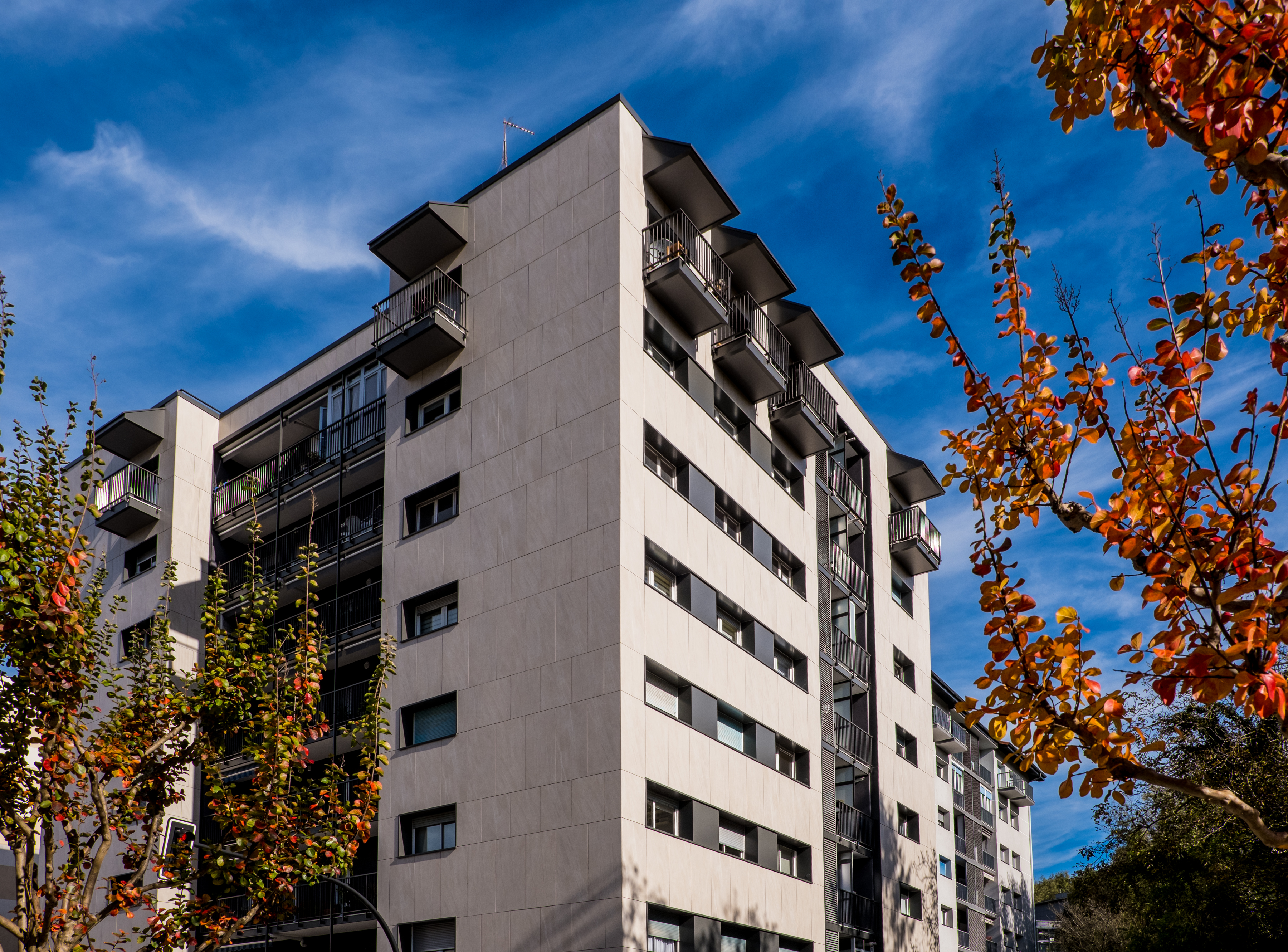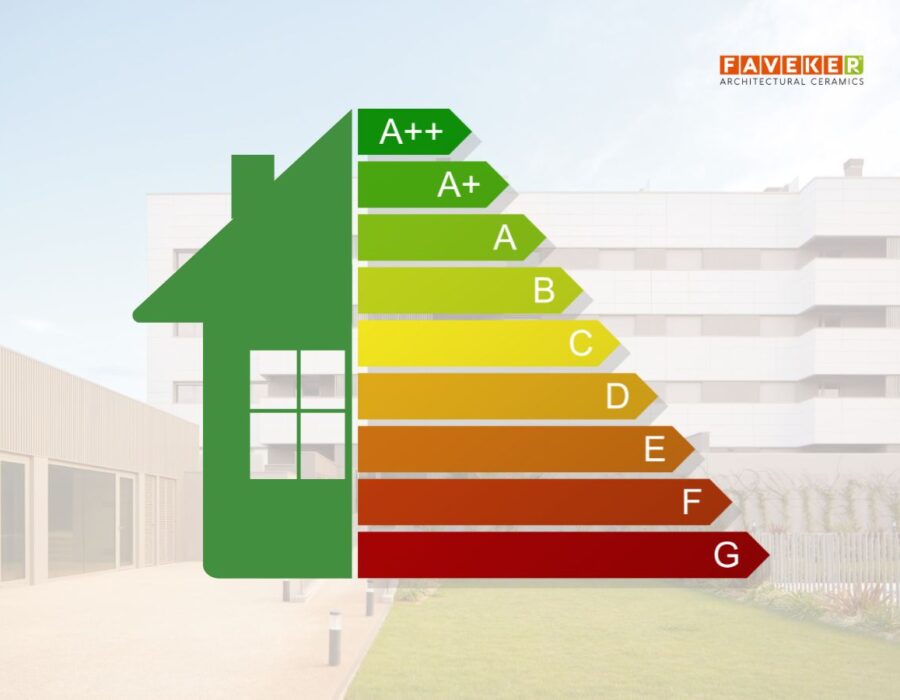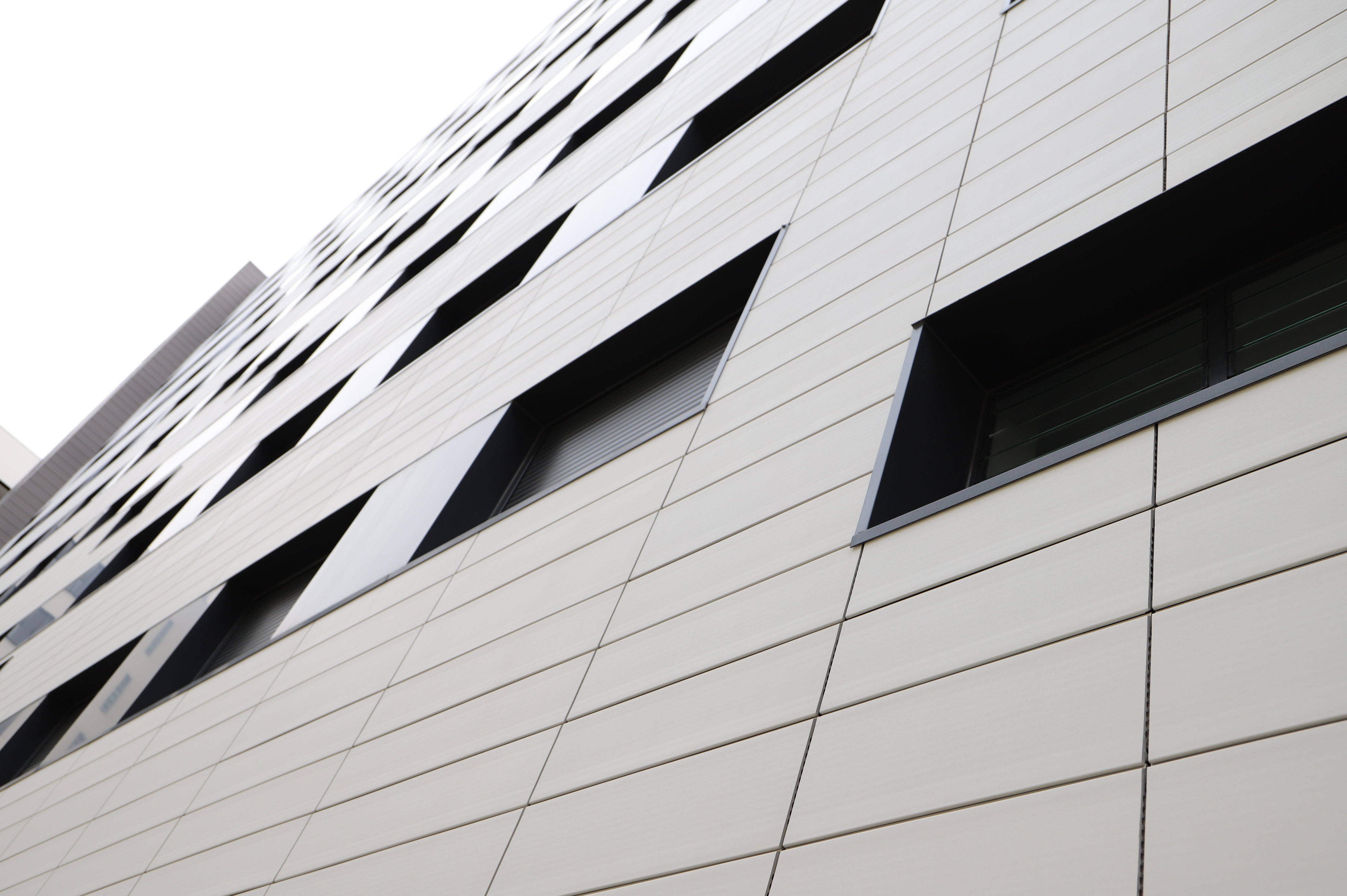
Zero-emission buildings: How do ceramic façades achieve the highest energy certification?
Climate change and the urgent need to reduce carbon emissions have led the European Union to establish new regulations and goals for buildings. On May 28, 2024, a new European directive on renovation and energy certification systems came into effect, setting the goal of creating zero-emission buildings. Let’s explore what this regulation means for the design of new constructions, the renovation of existing ones, and how ventilated ceramic façades play a crucial role.
What is a zero-emission building?
A zero-emission building is one that does not produce net greenhouse gas emissions. This is achieved through a combination of energy efficiency, the use of renewable energy sources, and energy storage technologies. Zero-emission buildings must be prepared to:
- Minimize energy consumption: through efficient design that reduces the demand for heating, cooling, lighting, and other uses.
- Utilize renewable energy: incorporating technologies such as solar panels, geothermal heat pumps, and wind energy systems.
- Manage carbon: implementing strategies to offset residual emissions.

What does the European directive on building energy certification say?
The European directive 2024/1275, published on April 24, came into effect on May 29, 2024, and each member state has two years to incorporate it into their legislation. This regulation stipulates that existing buildings must be transformed into zero-emission buildings by 2050, while new constructions must meet this standard from January 1, 2030, and from 2028 for public buildings.
In addition to setting these deadlines, directive 2024/1275 also establishes a scale for energy certification: buildings must achieve at least a Class B rating by 2030 and a Class A (zero emissions) by 2050, with G representing the least efficient buildings.
To help meet this challenge, the regulation also includes provisions for financial incentives to promote renovation and investment in renewable energy.
Certificates that assess building performance
Sustainability and livability certificates such as LEED, BREEAM, or PASSIVHAUS also focus on energy efficiency and serve as essential tools for assessing building performance. These certifications not only promote energy efficiency but also increase the value of buildings and enhance the quality of life for their occupants.
Ceramic Ventilated Façade, Key to Zero-Emission Buildings
Ceramic ventilated façades are an ideal choice for achieving zero-emission buildings and meeting the objectives of the new European regulations. This type of façade offers several advantages, and combined with the ceramic material used, it becomes a perfect solution for attaining the energy efficiency required by the regulations.
Why are ceramic façades efficient and sustainable?
- Nearly Zero Maintenance: Ceramic façades require very little maintenance compared to other materials. Their resistance to dirt and stains helps them retain their original appearance and functionality with minimal intervention.
- Durability and Resistance: Ceramic is extremely durable and resistant to harsh weather conditions, which extends the material’s lifespan and reduces the need for frequent replacements.
- Sustainability: The ceramic pieces used in ventilated façades are made from recyclable materials and can be produced from recycled content, minimizing their environmental impact. Additionally, during their manufacture and use, ceramics do not emit volatile organic compounds (VOCs), contributing to better indoor air quality.
- Energy Efficiency: The technical installation of ventilated façades creates an air cavity between the building wall and the ceramic cladding, enhancing thermal insulation and reducing the need for heating and cooling. Moreover, this installation addresses common issues associated with poorly insulated buildings.

Sustainable Impact of FAVEKER® Ceramic Ventilated Façades
The use of ceramic ventilated façades not only contributes to the energy efficiency of buildings but also has a positive impact on the overall sustainability of the built environment. Ceramic, by not emitting VOCs, improves indoor air quality, a crucial aspect for the health and well-being of occupants. Unlike other materials such as paints or high-pressure laminates, ceramics do not release toxic substances, making them a safe choice.
Additionally, ceramic production has significantly advanced by using renewable energy sources and recycling materials. This means that ceramic façades are beneficial not only during their service life but also during their manufacture and disposal. FAVEKER® also ensures committed and responsible waste management, achieving the verified Zero Waste declaration for its parent company, Gres Aragón, at its Alcorisa (Teruel) facilities.
We work to create efficient solutions through sustainable products aligned with the 6Rs and the Sustainable Development Goals. Evidence of this is our 100% recyclable products.
FAVEKER®, Committed to Efficient Buildings
The new European directive on energy certification sets an ambitious framework for transforming the EU’s real estate sector towards zero-emission buildings. Ceramic ventilated façades emerge as an effective solution to achieve these goals, thanks to their multiple advantages in terms of energy efficiency, durability, maintenance, and sustainability. By choosing ceramic cladding, property owners and builders not only comply with the regulations but also contribute to a more sustainable future.
Explore all our certifications and opt for an efficient solution for façade renovation or new architectural projects. Resolve your questions with our Technical Office. At FAVEKER®, we guide you in achieving efficient buildings with ceramic ventilated façades. Contact us!

